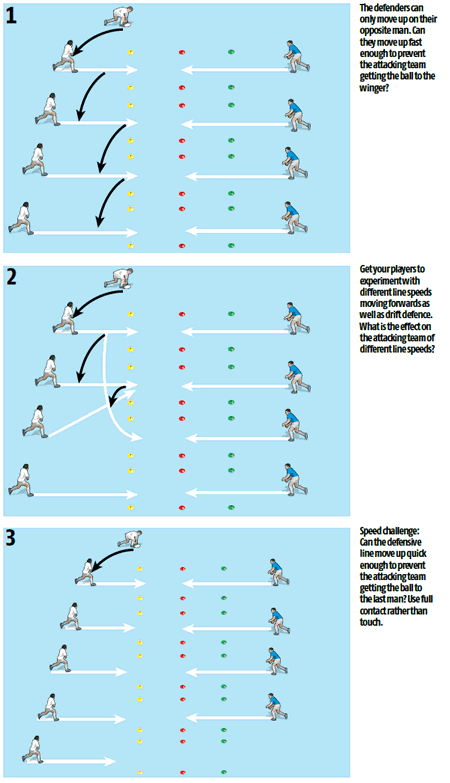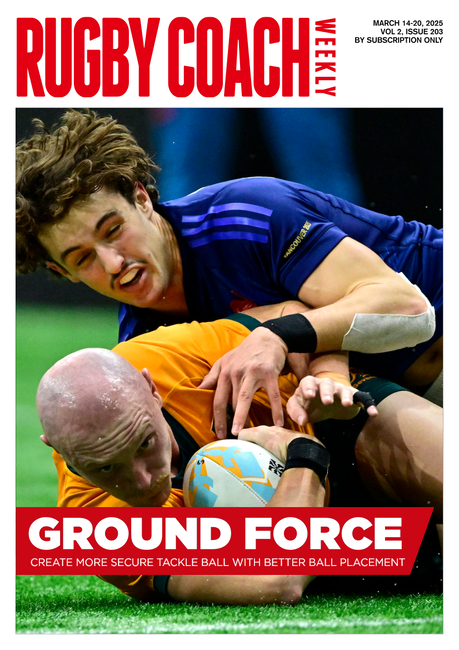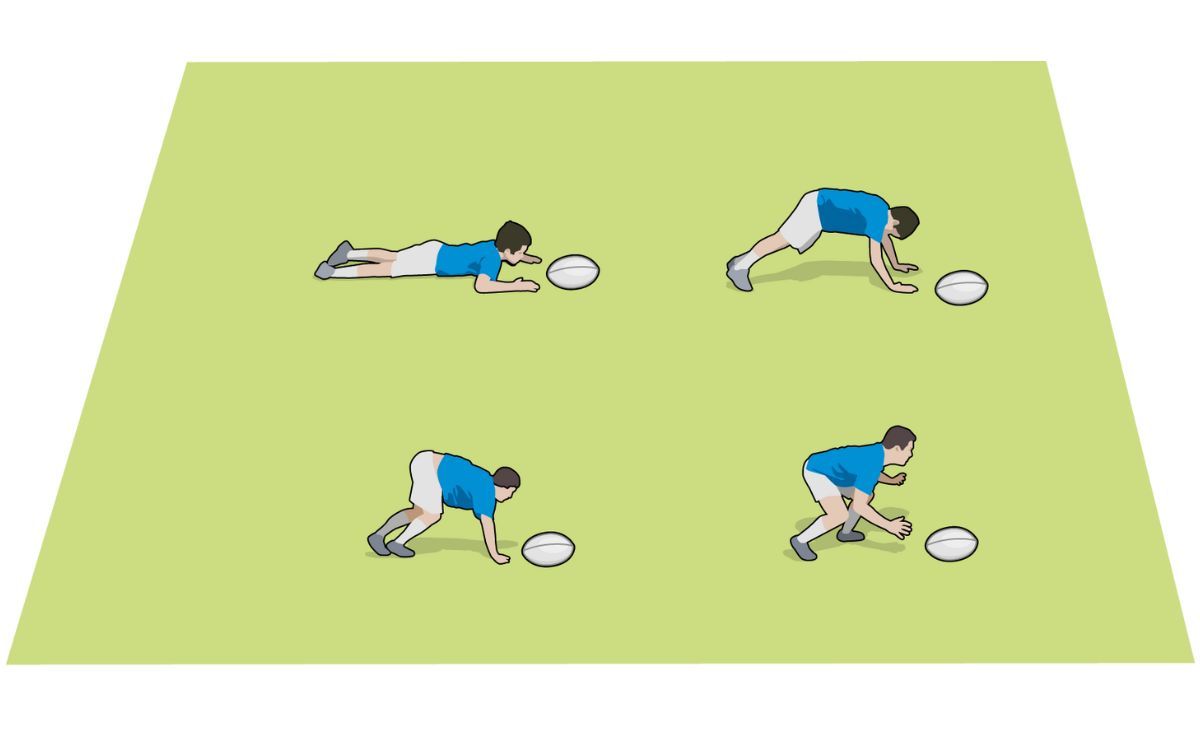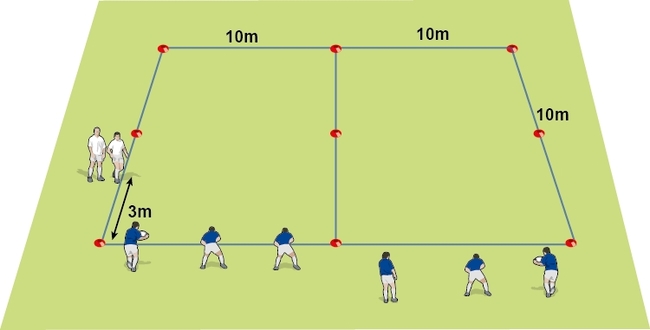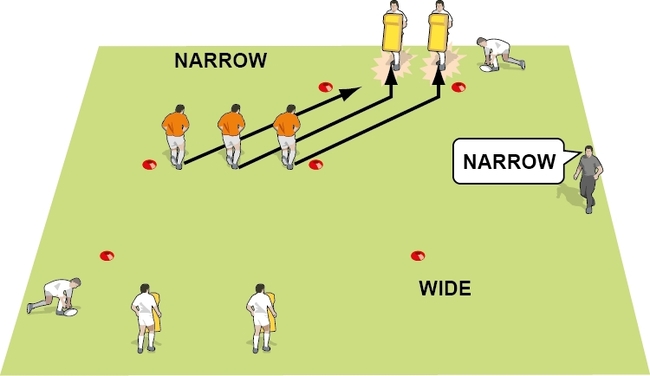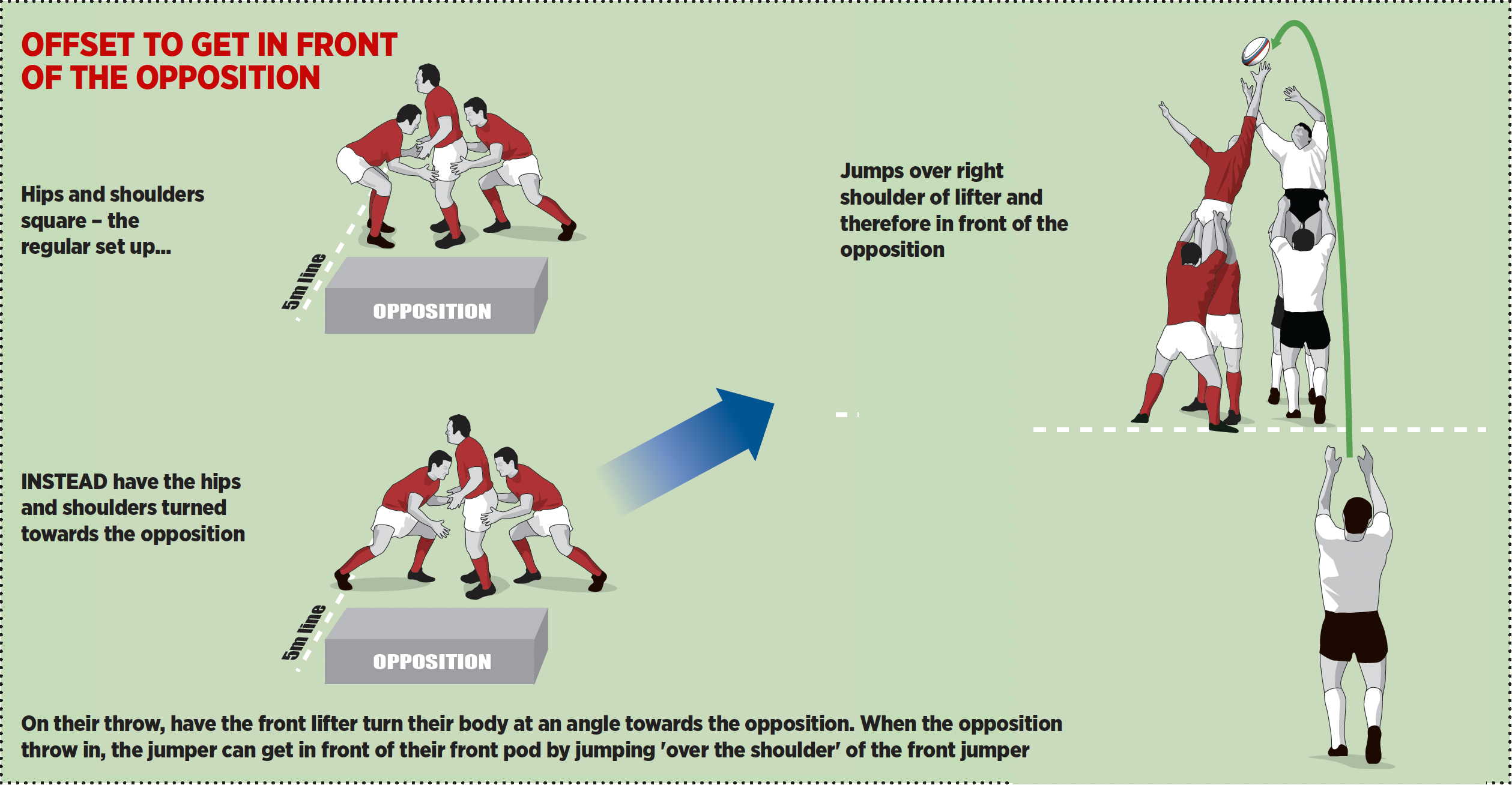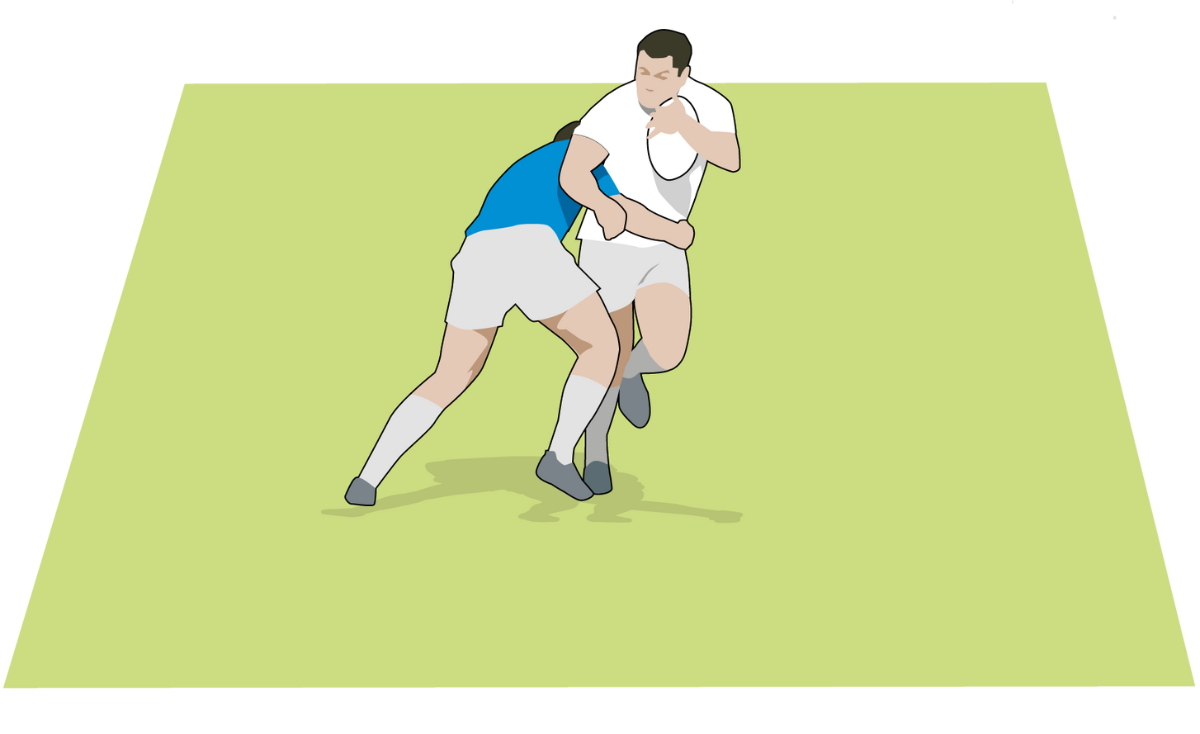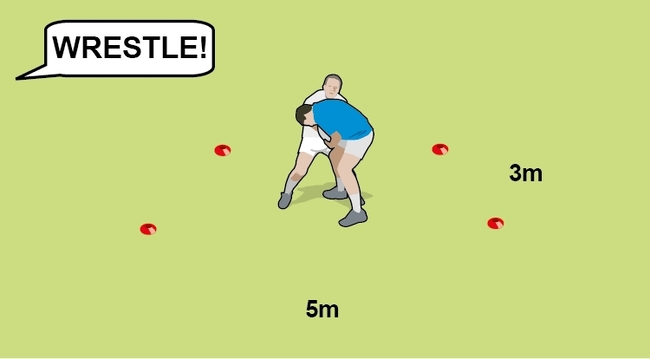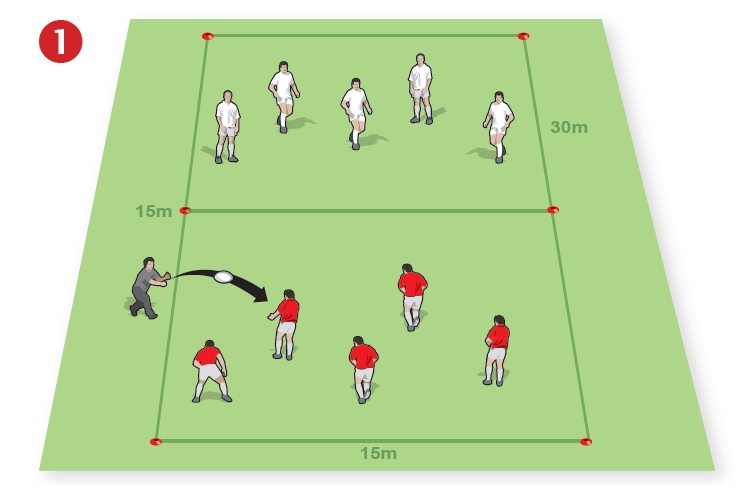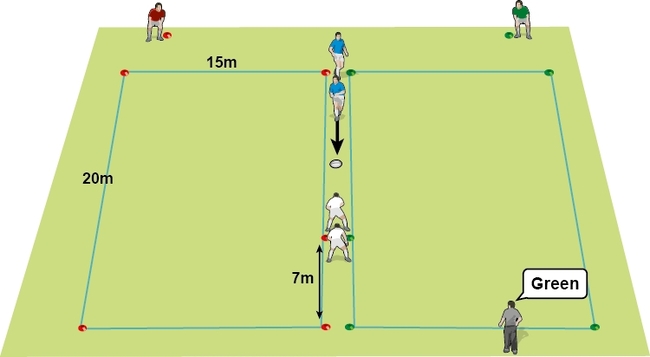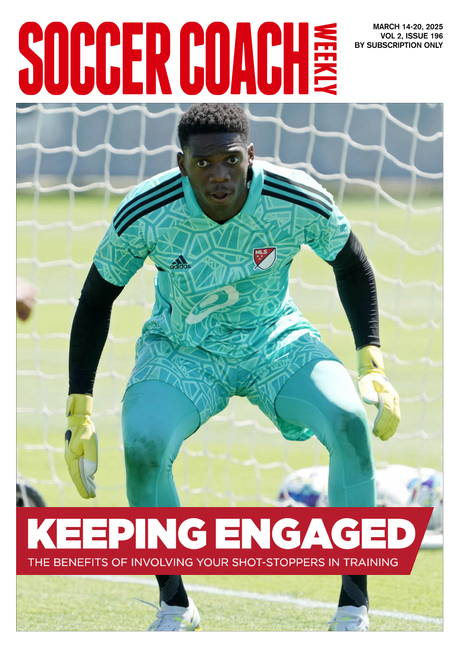Improve defensive line skills
Set-up
Set out three lines of cones 3m apart – each line should be a different colour if possible. Set up an attacking line and an opposing defensive line both of four players. The attacking team are fed by a scrum half.
What you get your players to do
The scrum half feeds the attacking line which tries to pass the ball down the line to the last player. The defensive line moves up and tries to stop the ball reaching the last attacking player (see picture 1). Defenders make a two handed touch on the attacker’s chest to denote a tackle. Get the attacking team to try simple moves, cuts, loops, miss passes (see picture 2). Allow the defence to drift (step out of the lines of cones) and experiment by moving up at different speeds to see what it does to the attackers.
Look for
Players scanning left and right to check team mates are moving up with them. Players communicating with the players either side of them, telling each other who they are covering.
Development
Add in an extra attacker (picture 3) and challenge the defence to stop the ball getting to him. Move on to full contact tackles in which the attacker can offload if he is on his feet but not if he is on the ground.
Notes
The golden rule for defensive line speed is that you always move forward at the speed of the slowest player. This means no dog-legs are created for the opposition to exploit. Players always need to be aware of who is next to them in the defensive line.
Newsletter Sign Up
Coaches Testimonials

Gerald Kearney, Downtown Las Vegas Soccer Club

Paul Butler, Florida, USA

Rick Shields, Springboro, USA

Tony Green, Pierrefonds Titans, Quebec, Canada
Subscribe Today
Be a more effective, more successful rugby coach
In a recent survey 89% of subscribers said Rugby Coach Weekly makes them more confident, 91% said Rugby Coach Weekly makes them a more effective coach and 93% said Rugby Coach Weekly makes them more inspired.
Get Weekly Inspiration
All the latest techniques and approaches
Rugby Coach Weekly offers proven and easy to use rugby drills, coaching sessions, practice plans, small-sided games, warm-ups, training tips and advice.
We've been at the cutting edge of rugby coaching since we launched in 2005, creating resources for the grassroots youth coach, following best practice from around the world and insights from the professional game.
